Science 🛸 Fiction

Sense of Wonder
Science fiction is often said to inspire a "sense of wonder". Science fiction editor and critic David Hartwell wrote: "Science fiction's appeal lies in combination of the rational, the believable, with the miraculous. It is an appeal to the sense of wonder."
Science fiction is often said to inspire a "sense of wonder". Science fiction editor and critic David Hartwell wrote: "Science fiction's appeal lies in combination of the rational, the believable, with the miraculous. It is an appeal to the sense of wonder."
Carl Sagan said:
One of the great benefits of science fiction is that it can convey bits and pieces, hints, and phrases, of knowledge unknown or inaccessible to the reader . . . works you ponder over as the water is running out of the bathtub or as you walk through the woods in an early winter snowfall.
In 1967, Isaac Asimov commented on the changes then occurring in the science fiction community:
And because today's real life so resembles day-before-yesterday's fantasy, the old-time fans are restless. Deep within, whether they admit it or not, is a feeling of disappointment and even outrage that the outer world has invaded their private domain. They feel the loss of a 'sense of wonder' because what was once truly confined to 'wonder' has now become prosaic and mundane.
One of the great benefits of science fiction is that it can convey bits and pieces, hints, and phrases, of knowledge unknown or inaccessible to the reader . . . works you ponder over as the water is running out of the bathtub or as you walk through the woods in an early winter snowfall.
In 1967, Isaac Asimov commented on the changes then occurring in the science fiction community:
And because today's real life so resembles day-before-yesterday's fantasy, the old-time fans are restless. Deep within, whether they admit it or not, is a feeling of disappointment and even outrage that the outer world has invaded their private domain. They feel the loss of a 'sense of wonder' because what was once truly confined to 'wonder' has now become prosaic and mundane.
January 2nd marks National Science Fiction Day,
commemorating famed science fiction writer Isaac Asimov's birthday.
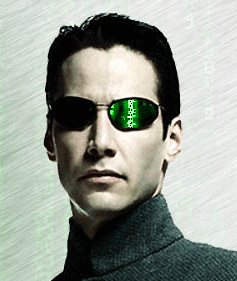
👇 📺 👇
Click Below to Choose a Video 👇
Science Fiction
Science fiction (SF or sci-fi) is a genre of speculative fiction, which typically deals with imaginative and futuristic concepts such as advanced science and technology, space exploration, time travel, parallel universes, and extraterrestrial life. Science fiction can trace its roots to ancient mythology. It is related to fantasy, horror, and superhero fiction and contains many subgenres. Its exact definition has long been disputed among authors, critics, scholars, and readers.
Science fiction, in literature, film, television, and other media, has become popular and influential over much of the world. It has been called the "literature of ideas", and often explores the potential consequences of scientific, social, and technological innovations. It sometimes serves as an outlet to facilitate future scientific and technological innovations. Besides providing entertainment, it can also criticize present-day society and explore alternatives. It is also often said to inspire a "sense of wonder".
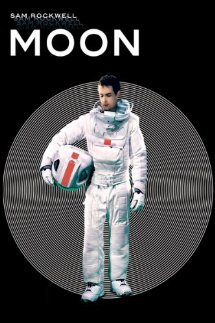
Definitions
According to Isaac Asimov, "Science fiction can be defined as that branch of literature which deals with the reaction of human beings to changes in science and technology." Robert A. Heinlein
wrote that "A handy short definition of almost all science fiction
might read: realistic speculation about possible future events, based
solidly on adequate knowledge of the real world, past and present, and
on a thorough understanding of the nature and significance of the scientific method.
American science fiction author and editor Lester del Rey
wrote, "Even the devoted aficionado or fan—has a hard time trying to
explain what science fiction is," and the lack of a "full satisfactory
definition" is because "there are no easily delineated limits to science
fiction."
Another definition of it comes from The Literature Book by DK
and is, "scenarios that are at the time of writing technologically
impossible, extrapolating from present-day science...[,]...or that deal
with some form of speculative science-based conceit, such as a society
(on Earth or another planet) that has developed in wholly different ways
from our own".
Part of the reason that it is so difficult to pin down an agreed
definition of science fiction is because there is a tendency among
science fiction enthusiasts to act as their own arbiter in deciding what
exactly constitutes science fiction. Damon Knight summed up the difficulty, saying "Science fiction is what we point to when we say it."
David Seed says it may be more useful to talk about science fiction as
the intersection of other, more concrete, genres and sub-genres.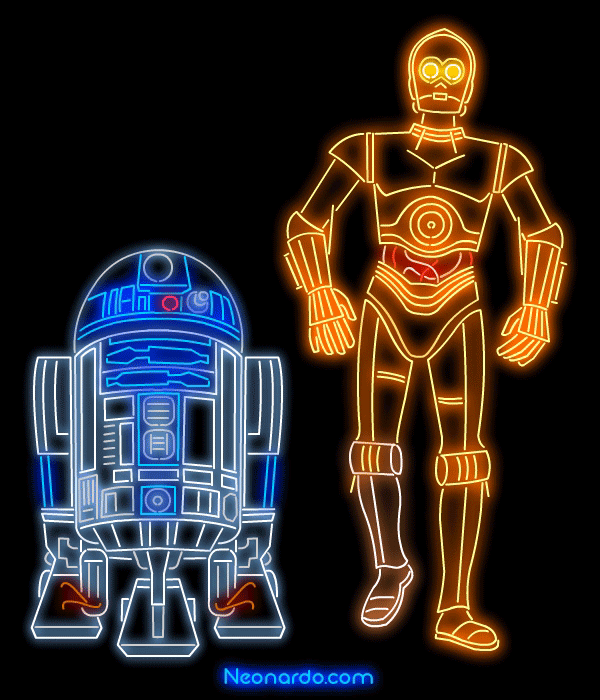
Alternative terms
Forrest J Ackerman has been credited with first using the term "sci-fi" (analogous to the then-trendy "hi-fi") in about 1954; the first known use in print was a description of Donovan's Brain by movie critic Jesse Zunser in January 1954. As science fiction entered popular culture, writers and fans active in the field came to associate the term with low-budget, low-tech "B-movies" and with low-quality pulp science fiction.By the 1970s, critics within the field, such as Damon Knight and Terry Carr, were using "sci fi" to distinguish hack-work from serious science fiction. Peter Nicholls writes that "SF" (or "sf") is "the preferred abbreviation within the community of sf writers and readers." Robert Heinlein found even "science fiction" insufficient for certain types of works in this genre, and suggested the term speculative fiction to be used instead for those that are more "serious" or "thoughtful".
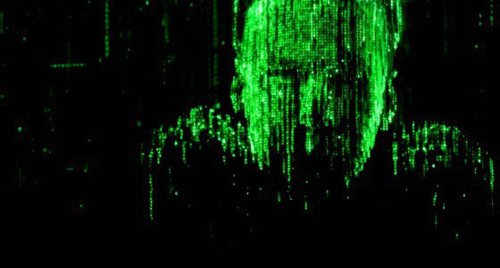
History
Some scholars assert that science fiction had its beginnings in ancient times, when the line between myth and fact was blurred.[21] Written in the 2nd century CE by the satirist Lucian, A True Story contains many themes and tropes characteristic of modern science fiction, including travel to other worlds, extraterrestrial lifeforms, interplanetary warfare, and artificial life. Some consider it the first science fiction novel.
Some of the stories from The Arabian Nights, along with the 10th-century The Tale of the Bamboo Cutter and Ibn al-Nafis's 13th-century Theologus Autodidactus, also contain elements of science fiction.
Written during the Scientific Revolution and the Age of Enlightenment, Johannes Kepler's Somnium (1634), Francis Bacon's New Atlantis (1627), Athanasius Kircher's Itinerarium extaticum (1656), Cyrano de Bergerac's Comical History of the States and Empires of the Moon (1657) and The States and Empires of the Sun (1662), Margaret Cavendish's "The Blazing World" (1666), Jonathan Swift's Gulliver's Travels (1726), Ludvig Holberg's Nicolai Klimii Iter Subterraneum (1741) and Voltaire's Micromégas (1752) are sometimes regarded as some of the first true science-fantasy works. Isaac Asimov and Carl Sagan considered Somnium the first science fiction story; it depicts a journey to the Moon and how the Earth's motion is seen from there. Kepler has been called the "father of science fiction".
Following the 17th-century development of the novel as a literary form, Mary Shelley's Frankenstein (1818) and The Last Man (1826) helped define the form of the science fiction novel. Brian Aldiss has argued that Frankenstein was the first work of science fiction. Edgar Allan Poe wrote several stories considered to be science fiction, including "The Unparalleled Adventure of One Hans Pfaall" (1835), which featured a trip to the Moon. Jules Verne was noted for his attention to detail and scientific accuracy, especially in Twenty Thousand Leagues Under the Sea (1870).[41][42][43][44] In 1887, the novel El anacronópete by Spanish author Enrique Gaspar y Rimbau introduced the first time machine.[45][46] An early French/Belgian science fiction writer was J.-H. Rosny aîné (1856–1940). Rosny's masterpiece is Les Navigateurs de l'Infini (The Navigators of Infinity) (1925) in which the word astronaut, "astronautique", was used for the first time.
Many critics consider H. G. Wells one of science fiction's most important authors, or even "the Shakespeare of science fiction". His notable science fiction works include The Time Machine (1895), The Island of Doctor Moreau (1896), The Invisible Man (1897), and The War of the Worlds (1898). His science fiction imagined alien invasion, biological engineering, invisibility, and time travel. In his non-fiction futurologist works he predicted the advent of airplanes, military tanks, nuclear weapons, satellite television, space travel, and something resembling the World Wide Web.
Edgar Rice Burroughs' A Princess of Mars, published in 1912, was the first of his three-decade-long planetary romance series of Barsoom novels, which were set on Mars and featured John Carter as the hero. These novels were predecessors to YA novels, and drew inspiration from European science fiction and American Western novels.
In 1924, We by Russian writer Yevgeny Zamyatin, one of the first dystopian novels, was published. It describes a world of harmony and conformity within a united totalitarian state. It influenced the emergence of dystopia as a literary genre.[55]
In 1926, Hugo Gernsback published the first American science fiction magazine, Amazing Stories. In its first issue he wrote:
By 'scientifiction' I mean the Jules Verne, H. G. Wells and Edgar Allan Poe type of story—a charming romance intermingled with scientific fact and prophetic vision... Not only do these amazing tales make tremendously interesting reading—they are always instructive. They supply knowledge... in a very palatable form... New adventures pictured for us in the scientifiction of today are not at all impossible of realization tomorrow... Many great science stories destined to be of historical interest are still to be written... Posterity will point to them as having blazed a new trail, not only in literature and fiction, but progress as well.
In 1928, E. E. "Doc" Smith's first published work, The Skylark of Space, written in collaboration with Lee Hawkins Garby, appeared in Amazing Stories. It is often called the first great space opera. The same year, Philip Francis Nowlan's original Buck Rogers story, Armageddon 2419, also appeared in Amazing Stories. This was followed by a Buck Rogers comic strip, the first serious science fiction comic.
In 1937, John W. Campbell became editor of Astounding Science Fiction, an event that is sometimes considered the beginning of the Golden Age of Science Fiction, which was characterized by stories celebrating scientific achievement and progress. In 1942, Isaac Asimov started his Foundation series, which chronicles the rise and fall of galactic empires and introduced psychohistory. The series was later awarded a one-time Hugo Award for "Best All-Time Series". The "Golden Age" is often said to have ended in 1946, but sometimes the late 1940s and the 1950s are included.
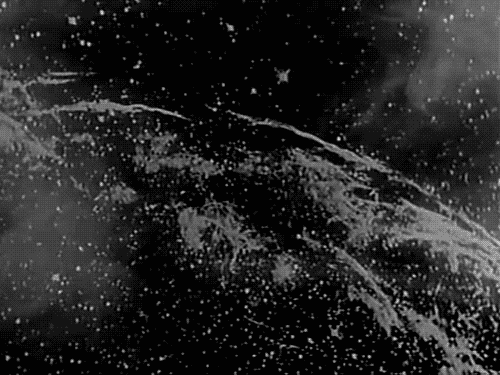
Film
The first, or at least one of the first, recorded science fiction film is 1902's A Trip to the Moon, directed by French filmmaker Georges Méliès. It was profoundly influential on later filmmakers, bringing a different kind of creativity and fantasy to the cinematic medium. In addition, Méliès's innovative editing and special effects techniques were widely imitated and became important elements of the medium.
1927's Metropolis, directed by Fritz Lang, is the first feature-length science fiction film. Though not well received in its time, it is now considered a great and influential film. In 1954, Godzilla, directed by Ishirō Honda, began the kaiju subgenre of science fiction film, which feature large creatures of any form, usually attacking a major city or engaging other monsters in battle.
1968's 2001: A Space Odyssey, directed by Stanley Kubrick and based on the work of Arthur C. Clarke, rose above the mostly B-movie offerings up to that time both in scope and quality, and greatly influenced later science fiction films. That same year, Planet of the Apes (the original), directed by Franklin J. Schaffner and based on the 1963 French novel La Planète des Singes by Pierre Boulle, was released to popular and critical acclaim, due in large part to its vivid depiction of a post-apocalyptic world in which intelligent apes dominate humans.
In 1977, George Lucas began the Star Wars film series with the film now identified as "Star Wars: Episode IV – A New Hope". The series, often called a space opera,[131] went on to become a worldwide popular culture phenomenon, and the second-highest-grossing film series of all time.
Since the 1980s, science fiction films, along with fantasy, horror, and superhero films, have dominated Hollywood's big-budget productions. Science fiction films often "cross-over" with other genres, including animation (WALL-E – 2008, Big Hero 6 – 2014), gangster (Sky Racket – 1937), Western (Serenity – 2005), comedy (Spaceballs −1987, Galaxy Quest – 1999), war (Enemy Mine – 1985), action (Edge of Tomorrow – 2014, The Matrix – 1999), adventure (Jupiter Ascending – 2015, Interstellar – 2014), sports (Rollerball – 1975), mystery (Minority Report – 2002), thriller (Ex Machina – 2014), horror (Alien – 1979), film noir (Blade Runner – 1982), superhero (Marvel Cinematic Universe – 2008–), drama (Melancholia – 2011, Predestination – 2014), and romance (Eternal Sunshine of the Spotless Mind – 2004, Her – 2013).

Television
Science fiction and television have consistently been in a close relationship. Television or television-like technologies frequently appeared in science fiction long before television itself became widely available in the late 1940s and early 1950s.
The first known science fiction television program was a thirty-five-minute adapted excerpt of the play RUR, written by the Czech playwright Karel Čapek, broadcast live from the BBC's Alexandra Palace studios on 11 February 1938. The first popular science fiction program on American television was the children's adventure serial Captain Video and His Video Rangers, which ran from June 1949 to April 1955.
The Twilight Zone (the original series), produced and narrated by Rod Serling, who also wrote or co-wrote most of the episodes, ran from 1959 to 1964. It featured fantasy, suspense, and horror as well as science fiction, with each episode being a complete story. Critics have ranked it as one of the best TV programs of any genre.
The animated series The Jetsons, while intended as comedy and only running for one season (1962–1963), predicted many inventions now in common use: flat-screen televisions, newspapers on a computer-like screen, computer viruses, video chat, tanning beds, home treadmills, and more. In 1963, the time travel-themed Doctor Who premiered on BBC Television. The original series ran until 1989 and was revived in 2005. It has been extremely popular worldwide and has greatly influenced later TV science fiction. Other programs in the 1960s included The Outer Limits (1963–1965), Lost in Space (1965–1968), and The Prisoner (1967).
Star Trek (the original series), created by Gene Roddenberry, premiered in 1966 on NBC Television and ran for three seasons. It combined elements of space opera and Space Western. Only mildly successful at first, the series gained popularity through syndication and extraordinary fan interest. It became a very popular and influential franchise with many films, television shows, novels, and other works and products.[156][157][158][159] Star Trek: The Next Generation (1987–1994) led to six additional live action Star Trek shows (Deep Space 9 (1993–1999), Voyager (1995–2001), Enterprise (2001–2005), Discovery (2017–present), Picard (2020–2023), and Strange New Worlds (2022–present), with more in some form of development.
The miniseries V premiered in 1983 on NBC. It depicted an attempted takeover of Earth by reptilian aliens. Red Dwarf, a comic science fiction series aired on BBC Two between 1988 and 1999, and on Dave since 2009. The X-Files, which featured UFOs and conspiracy theories, was created by Chris Carter and broadcast by Fox Broadcasting Company from 1993 to 2002, and again from 2016 to 2018. Stargate, a film about ancient astronauts and interstellar teleportation, was released in 1994. Stargate SG-1 premiered in 1997 and ran for 10 seasons (1997–2007). Spin-off series included Stargate Infinity (2002–2003), Stargate Atlantis (2004–2009), and Stargate Universe (2009–2011). Other 1990s series included Quantum Leap (1989–1993) and Babylon 5 (1994–1999).
SyFy, launched in 1992 as The Sci-Fi Channel, specializes in science fiction, supernatural horror, and fantasy.
The space-Western series Firefly
premiered in 2002 on Fox. It is set in the year 2517, after the arrival
of humans in a new star system, and follows the adventures of the
renegade crew of Serenity, a "Firefly-class" spaceship. Orphan Black
began its five-season run in 2013, about a woman who assumes the
identity of one of her several genetically identical human clones. In
late 2015 SyFy premiered The Expanse
to great critical acclaim, an American TV series about humanity's
colonization of the Solar System. Its later seasons would then be aired
through Amazon Prime Video.
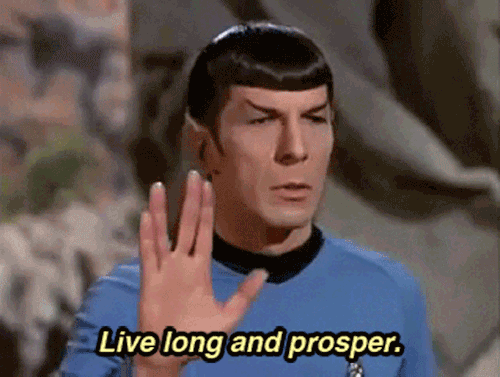
Social influence
Science fiction's rapid rise in popularity during the first half of
the 20th century was closely tied to the popular respect paid to science
at that time, as well as the rapid pace of technological innovation and new inventions. Science fiction has often predicted scientific and technological progress. Some works predict that new inventions and progress will tend to improve life and society, for instance the stories of Arthur C. Clarke and Star Trek. Others, such as H.G. Wells's The Time Machine and Aldous Huxley's Brave New World, warn about possible negative consequences.
In 2001 the National Science Foundation conducted a survey on "Public Attitudes and Public Understanding: Science Fiction and Pseudoscience".
It found that people who read or prefer science fiction may think about
or relate to science differently than other people. They also tend to
support the space program and the idea of contacting extraterrestrial civilizations. Carl Sagan wrote: "Many scientists deeply involved in the exploration of the solar system (myself among them) were first turned in that direction by science fiction."
Science fiction tries to blend fiction and reality seamlessly so
that the viewer can be immersed in the imaginative world. This includes
characters, settings, and tools and perhaps most critically, the
scientific plausibility and accuracy of technology and technological
concepts. Sometimes, science fiction forecasts real-life innovations and
discoveries. Science fiction has predicted several existing inventions, such as the atomic bomb, robots, and borazon. In the 2020 series Away astronauts use a real-life Mars rover called InSight to listen intently for a landing on Mars. Two years later in 2022 scientists used InSight to listen for the landing of a real spacecraft.
In the Jurassic Park
franchise, dinosaurs are created from ancient DNA and 18 years later,
real life scientists found dinosaur DNA in ancient fossils.
Brian Aldiss described science fiction as "cultural wallpaper".
Evidence for this widespread influence can be found in trends for
writers to employ science fiction as a tool for advocacy and generating
cultural insights, as well as for educators when teaching across a range
of academic disciplines not limited to the natural sciences. Scholar and science fiction critic George Edgar Slusser said that science fiction "is the one real international literary form we have today, and as such has branched out to visual media, interactive media and on to whatever new media the world will invent in the 21st century. Crossover issues between the sciences and the humanities are crucial for the century to come."

Science-fiction
La science-fiction est un genre narratif, principalement littéraire (littérature et bande dessinée), cinématographique et vidéo-ludique. Comme son nom l'indique, elle consiste à raconter des fictions reposant sur des progrès scientifiques et techniques obtenus dans un futur plus ou moins lointain (il s'agit alors également d'anticipation), parfois dans un passé fictif ou dans un univers parallèle
au nôtre. Elle met ainsi en œuvre des progrès physiquement impossibles,
du moins en l'état actuel de nos connaissances, donnant les thèmes
classiques du voyage dans le temps, du voyage interplanétaire ou interstellaire, de la colonisation de l'espace, de la rencontre avec des extra-terrestres, de la confrontation entre l'espèce humaine et ses créations, notamment les robots et les clones, ou de la catastrophe apocalyptique planétaire.
L'intrigue des récits de science-fiction peut se dérouler sur Terre (utopies, dystopies qui sont souvent des contre-utopies), dans l'espace interstellaire (vaisseau spatial dans le space opera, exoplanètes dans le planet opera) ou les deux.
La hard science-fiction, notamment le biopunk, le cyberpunk et le postcyberpunk (qui met en scène des robots), extrapole des connaissances actuelles scientifiques, technologiques et ethnologiques.
Ce genre peut parfois être associé à d'autres, comprenant une dimension inexplicable ou imaginaire comme la religion, le fantastique (surnaturel et réalisme fantastique : mythologie, extra-terrestre, monde perdu, mondes parallèles), la fantasy (science fantasy ou space fantasy, faisant souvent intervenir la magie), ainsi que la guerre ou l'humour.
Micromégas : histoire philosophique est un conte philosophique de Voltaire paru en 1752. Sa première version pourrait avoir été écrite en 1738 ou 1739. Sacrifiant à la mode des voyages extraordinaires, il décrit la visite de la Terre par deux géants : Micromégas, venu d'une planète de Sirius, et le secrétaire de l'Académie de Saturne.
Micromégas est à la fois l'un des premiers contes philosophiques et l'un des ouvrages les plus représentatifs de l'esprit des Lumières, car il concentre des réflexions de critique sociale, religieuse, morale, philosophique et des éléments de réflexion sur l'homme, sans oublier l'aspect scientifique, primordial pour les Encyclopédistes. Il souligne la notion philosophique de relativisme. Il écarte comme vaine la spéculation métaphysique, lui préférant l'observation et l'expérimentation scientifiques.
Parmi les précurseurs sont souvent cités :
* Lucien de Samosate (125-192), Histoire véritable ;
* Thomas More (1478-1535), L'Utopie, 1516 ;
* François Rabelais (1483/1494-1553), Pantagruel 1532 et Gargantua 1534 ;
* Francis Godwin (1562-1633), The Man in the Moone, 1638 ;
* Johannes Kepler (1571-1630), Le Songe ou l'Astronomie lunaire, 1634 ;
* Cyrano de Bergerac (1616-1655), Histoire comique des États et Empires de la Lune et Histoire comique des États et Empires du Soleil (satiriques), 1627 ;
* Margaret Cavendish, The Blazing World, 1666 ;
* Voltaire (1694-1778), Micromégas, (relate l’arrivée de géants provenant de Saturne et Sirius), 1752
* Marie-Anne Robert, Voyage de Milord Céton dans les Sept Planètes, 1765 :
* Louis-Sébastien Mercier (1740-1814), L'An 2440, rêve s'il en fut jamais, 1771 ;
* François-Félix Nogaret (1740-1831), Le Miroir des événemens actuels ou la Belle au plus offrant, fable scientifique de la création d'un homme artificiel, sorte d'automate ;
* Mary Shelley (1797-1851), Frankenstein, 1818 ; Edgar Allan Poe (1809-1849), Aventure sans pareille d'un certain Hans Pfaall, 1835 ;
* Thomas More (1478-1535), L'Utopie, 1516 ;
* François Rabelais (1483/1494-1553), Pantagruel 1532 et Gargantua 1534 ;
* Francis Godwin (1562-1633), The Man in the Moone, 1638 ;
* Johannes Kepler (1571-1630), Le Songe ou l'Astronomie lunaire, 1634 ;
* Cyrano de Bergerac (1616-1655), Histoire comique des États et Empires de la Lune et Histoire comique des États et Empires du Soleil (satiriques), 1627 ;
* Margaret Cavendish, The Blazing World, 1666 ;
* Voltaire (1694-1778), Micromégas, (relate l’arrivée de géants provenant de Saturne et Sirius), 1752
* Marie-Anne Robert, Voyage de Milord Céton dans les Sept Planètes, 1765 :
* Louis-Sébastien Mercier (1740-1814), L'An 2440, rêve s'il en fut jamais, 1771 ;
* François-Félix Nogaret (1740-1831), Le Miroir des événemens actuels ou la Belle au plus offrant, fable scientifique de la création d'un homme artificiel, sorte d'automate ;
* Mary Shelley (1797-1851), Frankenstein, 1818 ; Edgar Allan Poe (1809-1849), Aventure sans pareille d'un certain Hans Pfaall, 1835 ;


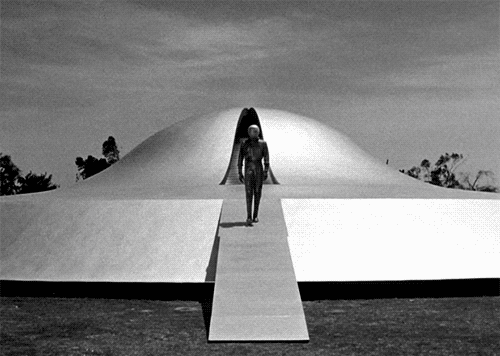

.gif)
No comments:
Post a Comment